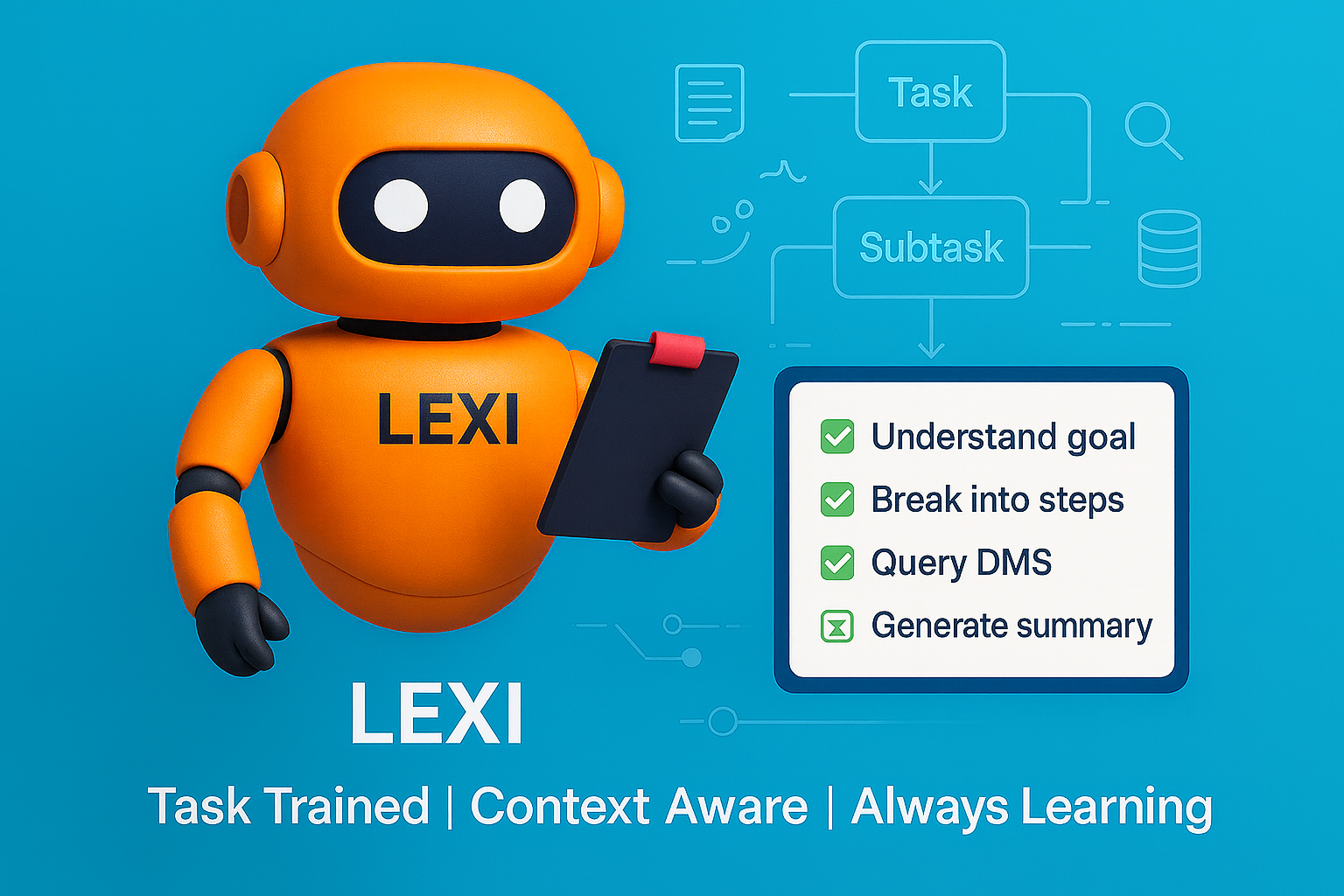If the first two posts introduced you to AI agents and showed you what they can do, this one takes you behind the curtain. Because while Lexi may look like a simple digital assistant, what’s under the hood is a carefully orchestrated mix of legal logic, technology, and workflow design.
In this post, we’ll break down how AI agents like Lexi actually work inside a law firm’s tech stack.
Mini series on AI Agent – Part 3 of 5
What Makes an AI Agent Different
Most legal tech tools follow instructions step-by-step. An AI agent is more like a junior associate with initiative. It receives a goal, evaluates how to get there, and adjusts its steps as it learns more. That decision-making autonomy is what separates agents from bots or scripts.
At a technical level, an AI agent includes:
- A large language model (LLM) to interpret, summarize, draft, or extract insights from legal text
- Memory and context tracking so it understands previous inputs and adapts accordingly
- Task orchestration that allows it to break down goals into smaller subtasks
- Connectivity to tools and data (e.g., document management systems, calendars, CRM, court dockets)
What Happens Behind the Scenes
Let’s say you ask Lexi: “Review these 25 contracts and flag all non-standard indemnity clauses.”
- Understanding the Goal
Lexi parses your instruction and identifies the objective: flag non-standard indemnity clauses. - Subtask Planning
Lexi breaks it into subtasks: open each document, locate indemnity clauses, compare to standard templates, flag deviations. - Executing the Workflow
It accesses the firm’s document repository, uses the LLM to identify clauses, runs a comparison engine, and prepares a summary. - Learning & Feedback
If a lawyer marks a false positive or adds comments, Lexi updates its logic for next time.
Where Does the Data Live?
Most firms don’t want sensitive content leaving their ecosystem. That’s why many AI agents are hosted in secure environments, often using private or hybrid cloud infrastructure. Firms can set parameters for what Lexi can access and what she can’t, ensuring compliance with data governance protocols.
Making Lexi Work for Your Firm
AI agents don’t come out of the box fully formed. They need:
- Prompt engineering to guide how tasks are framed
- Integration with firm-specific tools (case management, knowledge bases, billing systems)
- Ongoing tuning based on feedback from attorneys and staff
The best results come from an iterative approach: start small, test in low-risk use cases, then scale.
In our next post, we’ll talk about how to keep Lexi safe and accountable—with the right guardrails in place to mitigate risks without stifling innovation.

